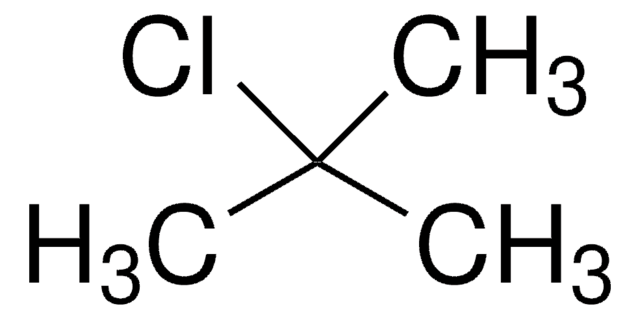360538
tert-Butanol
ACS reagent, ≥99.0%
Synonym(s):
2-Methyl-2-propanol, tert-Butyl alcohol, Trimethyl carbinol
About This Item
44 mmHg ( 26 °C)
Recommended Products
grade
ACS reagent
Quality Level
vapor density
2.5 (vs air)
vapor pressure
31 mmHg ( 20 °C)
44 mmHg ( 26 °C)
Assay
≥99.0%
form
solid or liquid
autoignition temp.
896 °F
expl. lim.
8 %
dilution
(for analytical testing)
impurities
≤0.001 meq/g Titr. acid
≤0.01% formaldehyde
≤0.1% water
evapn. residue
≤0.003%
color
APHA: ≤20
refractive index
n20/D 1.387 (lit.)
pH
7 (20 °C)
bp
83 °C (lit.)
mp
23-26 °C (lit.)
density
0.775 g/mL at 25 °C (lit.)
SMILES string
CC(C)(C)O
InChI
1S/C4H10O/c1-4(2,3)5/h5H,1-3H3
InChI key
DKGAVHZHDRPRBM-UHFFFAOYSA-N
Looking for similar products? Visit Product Comparison Guide
General description
It is used in:
- Routine chemical synthesis
- Drying & purification
- Critical labware cleaning
Application
Signal Word
Danger
Hazard Statements
Precautionary Statements
Hazard Classifications
Acute Tox. 4 Inhalation - Eye Irrit. 2 - Flam. Liq. 2 - STOT SE 3
Target Organs
Central nervous system, Respiratory system
Storage Class Code
3 - Flammable liquids
WGK
WGK 1
Flash Point(F)
59.0 °F - closed cup
Flash Point(C)
15 °C - closed cup
Choose from one of the most recent versions:
Already Own This Product?
Find documentation for the products that you have recently purchased in the Document Library.
Customers Also Viewed
Our team of scientists has experience in all areas of research including Life Science, Material Science, Chemical Synthesis, Chromatography, Analytical and many others.
Contact Technical Service




